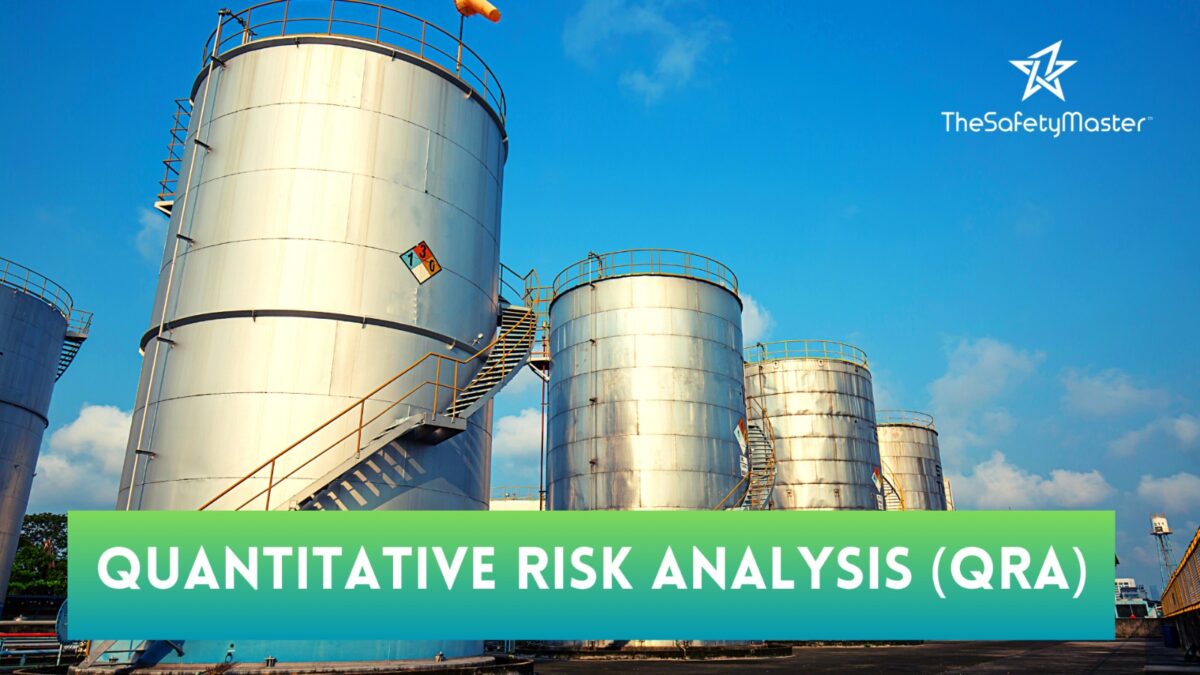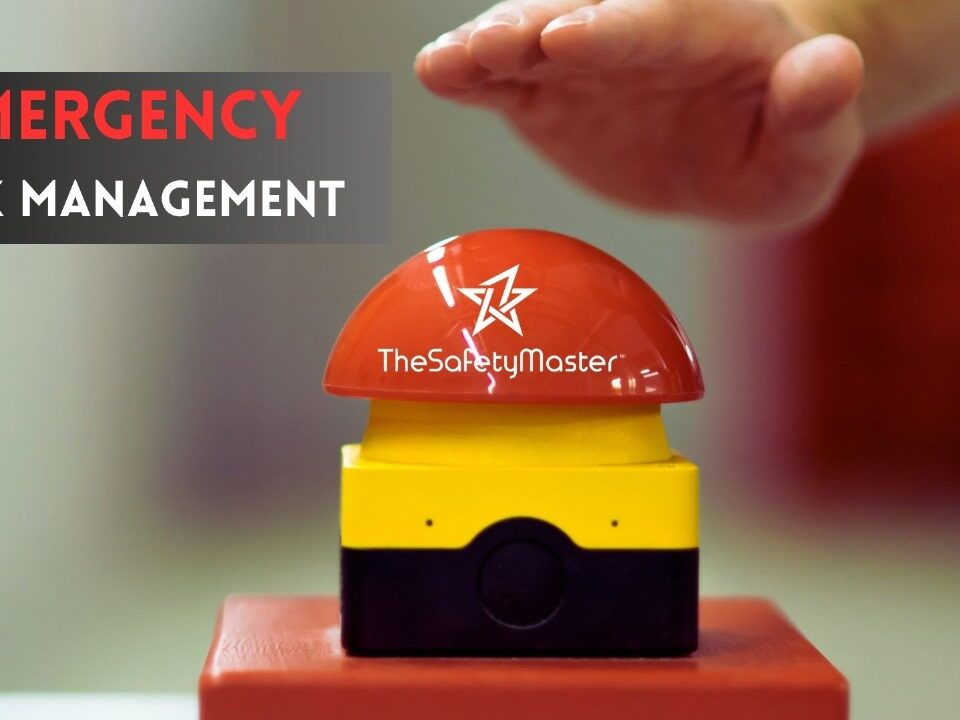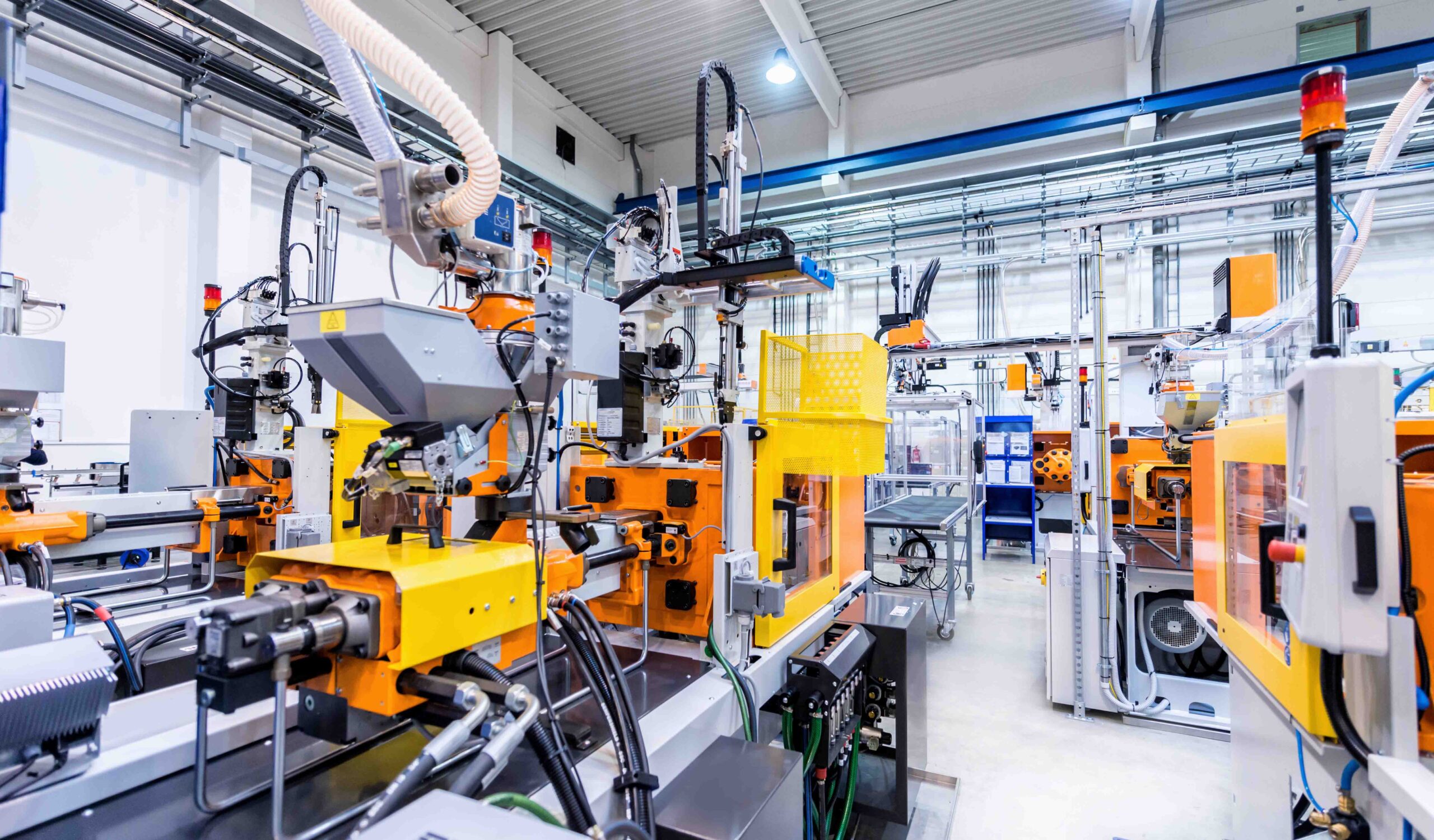The Role of Quantitative Risk Analysis (QRA) in Process Industries: Assessing and Mitigating Potential Threats

Fire Risk Assessment in Indian Industries: Identifying Potential Hazards and Implementing Safety Measures
November 6, 2023
The Role of Electrical Safety Audits in Indian Industrial Practices
November 9, 2023In this article, we delve into the crucial role of Quantitative Risk Analysis (QRA) in process industries, exploring its immense value in assessing and mitigating potential threats. As the pressure to ensure safety and minimize risks continues to mount in these industries, it becomes imperative to adopt a systematic and data-driven approach. We shed light on the various methods and tools employed in QRA, providing you with a comprehensive understanding of how this powerful technique aids in making informed decisions. Join us as we uncover the importance of QRA and how it promises to enhance safety, efficiency, and ultimately, peace of mind.
Introduction
Picture this: a bustling process industry where complex operations are underway, intricate machinery whirring, and a symphony of components working in harmony. In such dynamic environments, it is crucial to identify and manage potential risks that could jeopardize safety, efficiency, and profitability. This is where the role of Quantitative Risk Analysis (QRA) comes into play. In this article, we will delve deep into the realm of process industries and explore how QRA serves as a powerful tool for assessing and mitigating potential threats. From understanding the intricacies of QRA to analysing probabilities and consequences, we will unravel the methodologies involved in evaluating risk levels within these industries. Furthermore, we will discover effective strategies for implementing risk reduction measures and explore the benefits that QRA brings to the table
Understanding Process Industries
Process industries play a pivotal role in our modern world, encompassing sectors such as oil and gas, chemical production, pharmaceuticals, and manufacturing. These industries involve complex operations that transform raw materials into various products on a large scale. Understanding process industries requires delving into the intricate web of interconnected processes, systems, and equipment that make them function efficiently. In these dynamic environments, safety is paramount. Each step of the production process must be carefully monitored to minimize risks and ensure the well-being of both workers and the surrounding community. This necessitates a comprehensive understanding of the intricacies involved in these industries – from identifying potential hazards to implementing effective risk management strategies.
By grasping the complex nature of process industries, we gain insight into their immense potential for innovation and growth. These industries are at the forefront of technological advancements that improve our daily lives while reducing environmental impact. Understanding their inner workings allows us to harness this potential in a safe and sustainable manner, fostering optimism for a future where progress goes hand-in-hand with safety.
So let us embark on this exploration of process industries – an enlightening journey that will not only deepen our understanding but also instil hope for a world where risk is mitigated with precision, paving the way for progress and prosperity.
What is Quantitative Risk Analysis (QRA)?
What is Quantitative Risk Analysis (QRA)? In the intricate realm of process industries, where multifaceted systems intertwine and intricate operations take place, understanding and managing risks is paramount. This is where Quantitative Risk Analysis (QRA) emerges as a formidable tool. QRA is a meticulous and scientific approach employed to assess and quantify potential threats within process industries, aiming to mitigate adverse consequences.
At its core, QRA involves a systematic evaluation of hazards that could arise from various sources such as equipment malfunction, human error, or external factors. It encompasses a comprehensive examination of the probability of occurrence for each identified threat as well as the potential consequences associated with it. By meticulously calculating these variables, QRA delivers insightful risk assessments that aid in making informed decisions regarding risk management strategies.
With its rigorous methodology and reliance on data-driven analysis, QRA offers an invaluable perspective on risk reduction. By accurately quantifying risks, organizations can prioritize their resources efficiently while implementing targeted risk mitigation measures. Moreover, QRA enables stakeholders to gain a deeper understanding of the potential vulnerabilities inherent in their operations while fostering confidence in their ability to safeguard personnel, assets, and the environment.
By embracing QRA’s proficiency in assessing risks quantitatively rather than speculating qualitatively, process industries can pave the way for enhanced safety practices and operational excellence. The diligent application of QRA instills optimism by ensuring that proactive measures are in place to minimize potential threats effectively.
The Importance of QRA in Process Industries
The Importance of QRA in Process Industries: In the realm of process industries, where complex operations and intricate systems are at play, the significance of Quantitative Risk Analysis (QRA) cannot be overstated. QRA serves as a powerful tool to assess and mitigate potential threats that may arise within these industries. It provides a structured framework to identify risks, quantify their probabilities and consequences, and ultimately aid in informed decision-making processes.
By employing QRA techniques, process industries gain invaluable insights into the inherent risks associated with their operations. This enables them to proactively address vulnerabilities and implement robust risk management strategies. The ability to assess risks quantitatively allows for more accurate estimations of potential losses or harm, aiding in resource allocation for risk mitigation measures. Moreover, QRA helps establish a common language among stakeholders by providing a systematic approach to evaluate risk levels objectively.
Ultimately, the application of QRA in process industries instills confidence and peace of mind by fostering an environment of comprehensive risk awareness. By identifying potential threats and implementing effective risk reduction measures, companies can enhance safety standards while simultaneously improving operational efficiency. Embracing QRA not only safeguards assets but also ensures the protection of employees and surrounding communities, contributing to a harmonious coexistence between industry progress and public well-being.
Gathering Data for QRA
Gathering Data for QRA: The process of quantitative risk analysis (QRA) in process industries necessitates a meticulous collection of data to ensure a comprehensive assessment of potential threats. This stage involves gathering information from various sources, including historical records, industry reports, and expert opinions. Additionally, on-site inspections enable the acquisition of critical data regarding equipment specifications, operating conditions, and maintenance practices.
Delving deeper into the data-gathering phase, it is crucial to engage with personnel at all levels within the organization. Collaborating with operators, technicians, engineers, and managers not only facilitates the extraction of valuable insights but also fosters a culture of safety engagement. Through these interactions, detailed knowledge about processes and potential hazards can be acquired while simultaneously instilling a sense of ownership and commitment toward risk mitigation.
Optimistically speaking, embracing this inclusive approach to data collection not only enhances the accuracy of QRA but also strengthens communication channels within an organization. By valuing diverse perspectives and involving employees in the risk analysis process from its inception stages, companies can cultivate a shared understanding of potential threats while boosting morale and reinforcing their commitment to ensuring a safe working environment.
Analyzing Potential Threats:
Through the lens of quantitative risk analysis (QRA), process industries gain valuable insights into the various threats they face. The first step in this analysis is identifying potential hazards, which can range from equipment failures to human errors. These hazards are meticulously examined to determine their likelihood of occurrence and the potential consequences they may bring. In this phase, specific scenarios are simulated and evaluated, taking into account factors such as environmental conditions, process parameters, and operational procedures. This analytical process allows organizations to adopt a proactive approach toward risk mitigation. By thoroughly understanding potential threats, companies can develop targeted strategies that focus on preventing or minimizing their impact. Armed with this knowledge, decision-makers can implement robust safety measures that not only safeguard personnel and assets but also inspire confidence among stakeholders. Ultimately, an effective analysis of potential threats empowers organizations in process industries to create a secure environment conducive to sustainable growth and development.
Evaluating Risk Levels:
Once the probabilities and consequences of potential threats are calculated, the next crucial step in quantitative risk analysis (QRA) is evaluating the risk levels associated with each identified hazard. This assessment allows process industries to prioritize their focus and allocate resources accordingly. During this phase, various factors are taken into consideration to determine the severity of each risk. These may include the potential impact on human health and safety, environmental harm, financial implications, and reputational damage. By analyzing these aspects comprehensively, organizations gain a holistic understanding of the risks they face.
Optimistically speaking, this evaluation process empowers industries to adopt proactive measures that mitigate high-risk scenarios effectively. It helps enterprises identify areas where existing control measures might be inadequate or require enhancement. By ensuring a thorough evaluation of risk levels, organizations can implement targeted actions that reduce vulnerabilities and create a safer working environment for their employees while fostering sustainability and resilience in their operations.
Mitigation Strategies for Identified Risks
Mitigation Strategies for Identified Risks: When it comes to mitigating identified risks in process industries, a multifaceted approach is essential. One of the primary strategies involves establishing robust safety protocols and operational procedures. This includes regular equipment inspections, maintenance, and testing to ensure optimal functioning throughout the production process. Furthermore, implementing rigorous training programs for employees can enhance their awareness of potential risks and equip them with the necessary skills to handle emergency situations effectively.
In addition to operational measures, incorporating technological advancements can significantly bolster risk mitigation efforts. Utilizing advanced monitoring systems such as real-time data analysis and remote sensing can enable early detection and rapid response to potential threats. By continuously monitoring key parameters such as temperature, pressure, and flow rates, operators can take proactive measures to prevent incidents before they escalate.
Moreover, fostering a strong safety culture within the organization is paramount for successful risk mitigation. Encouraging open communication channels between management and employees creates an environment where everyone feels empowered to report any anomalies or potential hazards without fear of retribution. Regular safety meetings and drills further reinforce this culture of vigilance and preparedness.
By adopting a comprehensive approach that combines robust operational procedures, cutting-edge technology integration, and a strong safety culture, process industries can effectively mitigate identified risks while fostering an optimistic atmosphere centered on employee well-being and customer satisfaction.
Implementing Risk Reduction Measures
Implementing Risk Reduction Measures: Once potential risks have been identified and their levels of severity determined, it is crucial for process industries to take immediate action in implementing risk reduction measures. These measures aim to minimize the likelihood of incidents occurring and mitigate their potential consequences. One effective approach is to employ engineering controls that enhance the safety features of the infrastructure.
One example of such a measure is the installation of redundant systems. By incorporating duplicate equipment or safety devices, companies can ensure that if one system fails, there is a backup in place to prevent any disruptions or hazards. This not only increases reliability but also provides an additional layer of protection against unforeseen events.
Another essential aspect of implementing risk reduction measures involves regular maintenance and testing procedures. Companies should establish comprehensive protocols for inspecting equipment, conducting performance checks, and training personnel in emergency response techniques. By prioritizing preventative maintenance and ensuring staff are well-prepared for potential contingencies, process industries can significantly minimize risks.
Adopting a proactive mind-set toward risk management not only safeguards operations but also fosters a culture of safety within the organization. When employees witness management’s commitment to implementing risk reduction measures, they become more inclined to embrace safety practices themselves. This positive shift in attitude creates a harmonious work environment that boosts productivity while ensuring everyone’s well-being.
Remember: by actively engaging in robust risk reduction strategies, process industries can work towards creating safer workplaces where employees feel valued and protected at all times.
Monitoring and Updating the Risk Assessment
Section: Monitoring and Updating the Risk Assessment in the dynamic environment of process industries, monitoring and updating the risk assessment is crucial to ensure ongoing safety and security. This continuous process allows for adapting to new information, technological advancements, and changing regulations, thus enhancing risk management practices.
Regular monitoring involves systematic data collection from various sources such as incident reports, near-miss events, equipment inspections, and employee feedback. This data provides valuable insights into potential vulnerabilities and emerging risks within the operational framework. By staying vigilant and proactive in this regard, organizations can identify patterns or trends that may require immediate attention.
Updating the risk assessment involves a comprehensive review of existing control measures in place to mitigate identified risks. It is an opportunity to evaluate their effectiveness and address any gaps or shortcomings that may have been identified through monitoring activities. Moreover, this process encourages collaboration among stakeholders to gather diverse perspectives on risk management strategies.
By consistently monitoring and updating the risk assessment, organizations can foster a culture of continuous improvement and resilience. It allows them to stay ahead of potential threats while embracing new approaches for risk mitigation. With each update comes an opportunity for progress – a chance to optimize processes further, strengthen safety measures, and foster a sense of confidence among employees that their well-being is prioritized.
In summary, monitoring and updating the risk assessment serve as pillars for maintaining robust risk management practices in process industries. By embracing this iterative process with enthusiasm and dedication, organizations can proactively address emerging challenges while nurturing an environment that values safety above all else.
Benefits of QRA in Process Industries
Embracing the analytical power of Quantitative Risk Analysis (QRA) in process industries brings forth a multitude of advantages that can significantly enhance safety and operational efficiency. By employing QRA methodologies, companies gain a comprehensive understanding of potential risks, enabling them to make informed decisions and implement targeted risk reduction measures. This empowers industries to not only safeguard their employees and assets but also cultivate an environment of trust, reliability, and excellence. One notable benefit of QRA lies in its ability to provide a thorough evaluation of risks across various scenarios. By quantifying the probabilities and consequences associated with potential threats, decision-makers gain valuable insights into the likelihood and severity of each risk. Armed with this knowledge, organizations can prioritize mitigation efforts accordingly, allocating resources efficiently with a focus on high-risk areas. This proactive approach not only minimizes the likelihood of accidents or incidents but also optimizes resource utilization, leading to cost savings and improved operational efficacy.
Furthermore, implementing QRA practices instills confidence among stakeholders including clients, regulatory bodies, and investors. Organizations that demonstrate a commitment to comprehensive risk assessment strategies showcase their dedication to ensuring safety and minimizing environmental impact. This fosters trust among customers who are more likely to choose companies that prioritize risk management as it guarantees reliable product quality and uninterrupted supply chains. Additionally, by complying with industry standards driven by robust QRAs, organizations strengthen relationships with regulatory bodies while enhancing public perception regarding their commitment to safety.
In conclusion, embracing Quantitative Risk Analysis in process industries offers multifaceted benefits encompassing enhanced safety measures, optimized resource allocation efficiency, improved stakeholder trustworthiness as well as fortified compliance with regulations
Conclusion
In conclusion, the role of Quantitative Risk Analysis (QRA) in process industries cannot be undermined. By thoroughly assessing and mitigating potential threats, QRA ensures the safety and security of these industries. With data-driven analysis, calculated probabilities, and evaluation of risk levels, organizations can make informed decisions to implement effective risk reduction measures. The continuous monitoring and updating of risk assessments further enhances the resilience of process industries. By embracing QRA methodologies, we can navigate a future where safety and productivity coexist harmoniously, fostering an environment where innovation thrives amidst minimized risks – a promising future for process industries worldwide. As we delve deeper into the realm of quantitative risk analysis (QRA), we uncover new possibilities for overseeing potential threats in process industries. This meticulous approach allows us to gather comprehensive data that enables accurate assessments and proactive mitigation strategies.
By calculating probabilities and consequences diligently, we gain valuable insights into the risks involved




